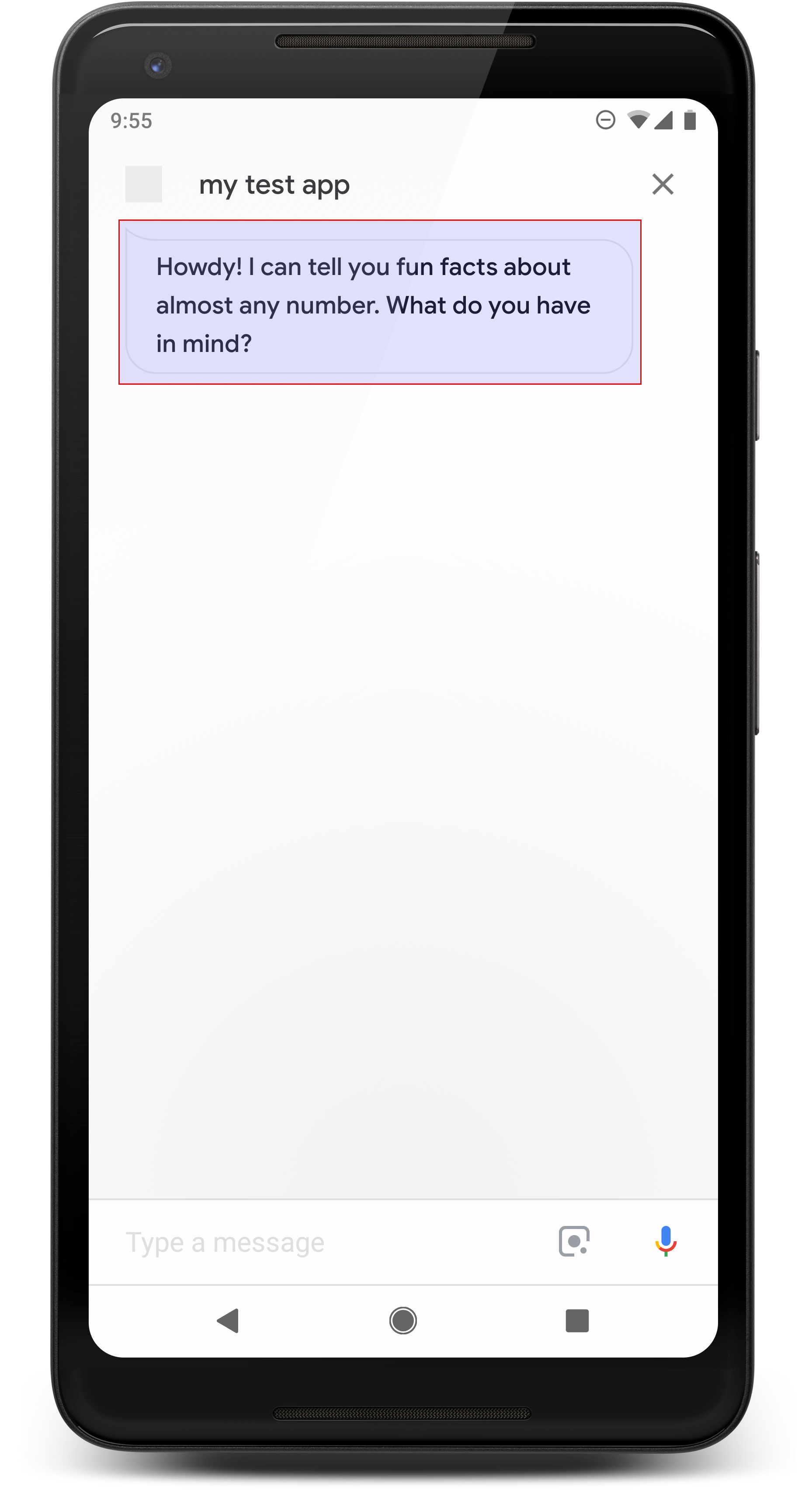
Простые ответы визуально принимают форму чат-пузыря и используют преобразование текста в речь (TTS) или язык разметки синтеза речи (SSML) для звука. Используя короткие простые ответы в разговоре, вы можете привлечь пользователей с помощью четкого визуального и аудиоинтерфейса, который можно сочетать с другими элементами разговора.
Содержимое пузырька чата в простом ответе должно представлять собой фонетическое подмножество или полную расшифровку вывода TTS/SSML. Это помогает пользователям понять, о чем говорит ваше действие, и повышает понимание в различных условиях.
В приглашении текст, который вы предоставляете в объектах first_simple и last_simple , использует свойства простого ответа. Google Ассистент отправляет все простые ответы в виде приглашения, а затем отправляет окончательный расширенный ответ в очереди подсказок.
Характеристики
Простой тип ответа имеет следующие свойства:
| Свойство | Тип | Требование | Описание |
|---|---|---|---|
speech | нить | Необязательный | Представляет слова, которые будут произнесены пользователю в SSML или преобразовании текста в речь. Если поле override в содержащем приглашении имеет значение «истина», то речь, определенная в этом поле, заменяет речь предыдущего простого приглашения. |
text | нить | Необязательный | Текст для отображения в чате. Строки длиной более 640 символов обрезаются по первому разрыву слова (или пробелу) до 640 символов. Мы рекомендуем использовать менее 300 символов, чтобы контент не выходил за пределы экрана, особенно в сочетании с карточкой или другим визуальным элементом. Если этот параметр не указан, Ассистент вместо этого отображает отображаемую версию |

Пример кода
ЯМЛ
candidates: - first_simple: variants: - speech: This is the first simple response. text: This is the 1st simple response. last_simple: variants: - speech: This is the last simple response. text: This is the last simple response.
JSON
{ "candidates": [ { "first_simple": { "variants": [ { "speech": "This is the first simple response.", "text": "This is the 1st simple response." } ] }, "last_simple": { "variants": [ { "speech": "This is the last simple response.", "text": "This is the last simple response." } ] } } ] }
Node.js
app.handle('Simple', conv => { conv.add(new Simple({ speech: 'This is the first simple response.', text: 'This is the 1st simple response.' })); conv.add(new Simple({ speech: 'This is the last simple response.', text: 'This is the last simple response.' })); });
JSON
{ "responseJson": { "session": { "id": "session_id", "params": {} }, "prompt": { "override": false, "firstSimple": { "speech": "This is the first simple response.", "text": "This is the 1st simple response." }, "lastSimple": { "speech": "This is the last simple response.", "text": "This is the last simple response." } } } }
SSML и звуки
Используйте SSML и звуки в своих ответах, чтобы сделать их более полными и улучшить взаимодействие с пользователем. Дополнительную информацию см. в документации SSML .
Звуковая библиотека
В нашей звуковой библиотеке мы предоставляем множество бесплатных коротких звуков. Эти звуки размещаются для вас, поэтому все, что вам нужно сделать, это включить их в свой SSML.

